General Insurance Blogs, Articles & Updates by - Magma HDI
Have us call you
- RENEW YOUR POLICY
- BUY NEW POLICY

Is comprehensive car insurance truly exhaustive? Here's the complete guide
A car has the capacity for durable and comfortable rides, ensures safety, and is a significant investment. All this has given cars an upper hand over all the other vehicles.
Although buying a car can be easy if you have enough money, it is not always the only thing. With a car, there are a ton of other responsibilities. One is getting your vehicle covered and ensuring the car insurance renewal is done on time.
There are multiple options available for car insurance online and offline. This can leave you to require more clarifications. One such option lies in the comprehensive car insurance that covers almost every damage that might trouble your car. From man-made problems to natural disasters, you'll get compensation for all the damages. However, this insurance might cost you more money than usual. Is it worth to have comprehensive car insurance, or is it just exhaustive? Let's find out!
What is comprehensive car insurance?
Comprehensive car insurance is not mandatory insurance by law, but most people prefer to buy it. It is because it comes with many benefits that set it apart from the other options.
Comprehensive car insurance will cover own damage (OD) as well as third-party damages. It covers all damages due to natural calamities, accidents, theft, man-made issues, and even fire. Natural calamities like floods, cyclones, and earthquakes are covered. Acts like vandalism and riots are listed under man-made issues.
What are the benefits of comprehensive car insurance in India?
1. Complete coverage:
This insurance type is the only one that offers complete coverage to a car, including its total or partial loss due to own damage and third-party damages. It also compensates for the death or disability of the owner-driver, third party, or property damage.
2. Best returns on investment:
Comprehensive insurance eliminates the need to buy separate policies to cover own damage and third-party damages. All the benefits can be obtained from a single policy, including the personal accident cover. This helps in saving money and offers the best ROI.
3. Liberty to add optional covers:
You can purchase additional covers like zero-depreciation, no-claim bonus, tyre protection, engine protection, breakdown assistance cover, etc. This makes your base policy stronger.
4. Cashless benefits:
Yes! You may enjoy cashless benefits while claiming your comprehensive car insurance when you get your car repaired or serviced in a network garage. You don't have to pay even a single penny for the damages!
You may have understood what comprehensive car insurance is all about. But, did you imagine to whom this insurance type would benefit the most?
1. The city drivers:
Cities signify constant traffic jams, chaos on roads, and persistent risks of accidents due to overcrowded roads and indiscipline traffic situations. Metropolitan residents must buy this policy to provide all-round protection to their cars.
2. The adventurers:
If you love to plan road trips and explore places frequently, this insurance can do wonders for you during emergencies with its road assistance cover.
3. New owners:
If you have bought a new car, the first step should be buying comprehensive coverage to improve the longevity of your new asset.
4. Premium and luxury car owners:
If you own premium and expensive car, having this insurance in your investment portfolio can be fruitful.
5. Obsessed with your car:
Even a small dent or scratch on the car panics you. Then you must opt for comprehensive coverage to calm your nerves and stay stress-free regarding compensation for any damage to your car.
You should keep various pointers in mind while buying comprehensive car insurance in India. Owning an asset is a crucial responsibility and ensuring its safety is paramount. Comprehensive car insurance has seamless benefits that make it a reliable investment option and less exhaustive compared to its counterparts. Regardless of the policy you buy, get the car insurance renewal done on time to avoid your policy from lapsing.
Click HERE to get your car insurance renewal done on time.
Disclaimer: The information provided above is for illustrative purposes only. To get more details, please refer to policy wordings and prospectus before purchasing a policy.

Practise these habits to improve your cognitive skills
We have all heard the famous proverb, "a sound mind lives in a sound body". Both are integral parts that should be taken care of to lead a healthy life. In this blog, we will discuss some methods to sharpen your brain and polish your cognitive skills.
You can call your brain the control centre of your system since it processes all you see, hear, touch and think. Your brain perceives different sensations, sounds, images, etc., and conveys the signal to your whole body, signalling it to respond accordingly. Incredibly, this process happens within a matter of seconds.
It is crucial to take extra care of your brain's health and mental wellbeing. Dietary and lifestyle changes help combat cognitive-related issues such as mental health problems, anxiety and depression and help in enhancing creativity.
Here's how you can sharpen your cognitive abilities.
1. Relieve stress:
Develop a habit of taking walks daily and breathing in the fresh air. Other relaxing activities can include getting a massage, reading, meditation, etc. These activities help release the tension and stress from your body and lower your cortisol levels which tend to affect the memory sections of your brain.
2. Sleep well:
Sleeping at least eight hours a day is crucial to maintaining a sound mind. Quality sleep helps your mind commit things to memory and improve your brain's retention capacity.
3. Play:
Include games like crossword, sudoku, and puzzles in your daily schedule. These games intensify the usage of brain functions, thus helping in improving your reasoning and retention abilities.
4. Doodling:
Recent research has proven that doodling and colouring activate your brain's reasoning and problem-solving region. These activities enhance the blood supply to the prefrontal cortex and strengthen your mind's analytical and attention capabilities.
5. Dark chocolate:
Dark chocolate has been proven good for your physical and mental health. Studies have found that it contains flavanol, a substance that boosts your brain's memory retention, functioning, and processing abilities.
6. Reduce sugar consumption:
Consumption of carbohydrates and a sugar-rich diet can slow down your brain as your body takes time and energy to break down these substances. Consuming too much sugar also leads to depression and heart diseases, thus risking your physical and mental health.
7. Exercise:
Research has shown that lifting weights help in improving cognitive abilities. People who lift weights tend to increase their spatial memory. It helps in memorising the environments one is in at any given moment. Spatial memory enables you to remember layouts of a room or how you arrange things in your space. People who achieve their physical goals by walking strengthen their verbal memory.
These are some techniques that can help improve your cognitive skills. Apart from the above tips, you may even practise mindfulness by indulging yourself in daily yoga and meditation sessions. Yoga and meditation These healthy practices can keep your brain active and impact your productivity.
A wise option would be to protect your and your loved ones' health against unprecedented circumstances. To stay monetarily stress-free in health emergencies, explore multiple options and purchase the best health insurance policy in India.
Click HERE to know more about how you can buy the best health insurance policy in India.
Disclaimer: The information provided above is for illustrative purposes only. To get more details, please refer to policy wordings and prospectus before purchasing a policy.

Here’s how smart helmets are set to change the riding experience
Helmets are protective headgear that can save your life in case you fall from a running two-wheeler or collide with another vehicle. Also, wearing a helmet while riding a two-wheeler is compulsory under Section 129 of the Motor Vehicles Act, 1988.
Imagine if a helmet can detect drunk driving, location tracking, navigation, a hands-free device, and several other functions other than just protecting your head during a ride. Yes, this is all possible with the advent of intelligent helmets.
This article tells how smart helmets are set to change your riding experience.
1. Detecting a helmet:
Many two-wheeler riders do not wear a helmet intentionally. Also, some may forget to wear it while leaving home or the office. This can be dangerous to their lives in case they meet with an accident on their way. Smart helmets are equipped with Force Sensing Sensor (FSR) that detects whether the rider is wearing a helmet. It senses actual human touch. If it does not detect it, you will not be able to turn on the ignition of your two-wheeler.
2. Alcohol sensor:
Smart helmets can also be fitted with a gas sensor that can identify the alcohol content from your breath. It can be placed right in front of your mouth, detect if you are drunk, and prevent your vehicle from starting. This can be very helpful in avoiding an accident due to drunken driving.
3. Accident detection:
Smart helmets can detect accidents and alert a phone number by sending a message. It makes use of accelerometers and vibration sensors for this purpose. A free-fall sensing unit can detect when the two-wheeler falls freely and is not in control. Similarly, a vibration sensor senses signals and pressure and sends a message to the registered mobile number. This can be life-saving in times of an accident as the receiver of the message can instantly rush to the accident spot or alert friends, police, and an ambulance to reach the spot.
4. Over-speeding and rash driving alert:
Smart helmets can also alert you if you are riding above the speed limit fed into it or are driving rashly. Such alerts warn you to reduce your speed and drive carefully.
5. Bluetooth connectivity:
Smart helmets can be connected to your bike and mobile phone via Bluetooth. This can allow you to make calls or answer them safely while riding your two-wheeler.
6. Navigation, location tracking, and recording:
Smart helmets come equipped with a GPS device that can accurately tell the rider’s location. This can be useful in times of emergency or theft of your two-wheeler. Also, they can help in navigation while you are riding your two-wheeler.
You can also install hi-tech cameras on your smart helmets. They can record and store all the details of your rides, such as speed, distance covered, time taken, etc. This can be very helpful for bikers and racers.
Smart helmets are a world in itself, with numerous options for adding or removing applications and additional devices per rider needs. They can completely change how you have been riding your two-wheelers. They help to make your rides much safer and technologically advanced than a regular conventional helmet.
Why just rely upon a smart helmet to alert and protect you in case of an accident? Choose from a wide variety of 2 wheeler insurance online after comparing them thoroughly. Protect yourself from any sort of financial losses that you may suffer due to an accident or theft of your two-wheeler.
Click HERE to buy 2 wheeler insurance online.
Disclaimer: The information provided above is for illustrative purposes only. To get more details, please refer to policy wordings and prospectus before purchasing a policy.
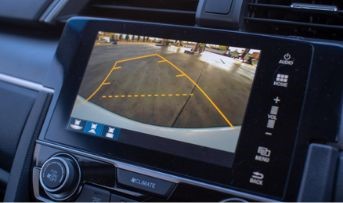
If driving in reverse scares you, here’s what you need to know
Reverse driving and parallel parking are two things that most people are scared of. Parallel parking takes some practice and extreme caution. The same goes for driving in reverse. Expertise in these driving techniques helps in becoming a skilled driver.
If driving in reverse scares you, here's what you need to know. This blog answers all your questions and more information on driving in reverse gear to understand how you can gain confidence over your anxious mindset about these driving techniques. So, without any further delay, let's get started.
1. It is not a big deal:
Many expert drivers get confused and anxious while driving in reverse. Due to nervous feelings, they might even mess things up and land in collisions. Therefore, it is vital to make yourself comfortable and relaxed in your position to get an accurate view of the traffic and the path you need to reverse.
You can place your foot on the brake and for your confidence, turn around to ensure you get a clear view of the pathway. Ensure that you keep your seatbelt intact and ask the passengers to fasten their seatbelts properly.
2. It is time for the reverse gear:
After positioning your seat, fastening your seatbelt, and adjusting your mirrors to get a clear rear and front view, you need to shift your gear to the state in which it indicates R, i.e., reverse gear.
After performing this entire process, you can slowly put your foot on the accelerator pedal and put slight pressure, just enough for your car to move, avoiding the risk of any collisions. Slowly release the clutch after putting your foot on the pedal. Drive the vehicle in reverse at a carefully vigilant speed, and park your car right where you want it to be.
3. Mirrors at the right angle:
You must always ensure that you keep looking in the passenger side mirror to be aware of any other vehicles or objects in the surrounding area, especially when driving in reverse gear. This will avoid any risk of collisions or accidents with things that might come your way. Mirrors even help you get a better view and understanding of available space to park your car correctly.
Some other tips to take care of while you are driving in reverse include placing your right hand on the steering's upper portion to gain optimum grip, going reverse in a straight line, stopping the car at the desired position slowly to avoid any jerking, doing a complete 360-degree check before you begin to reverse in a particular location, etc. Make optimum use of a rear parking camera that will assist you in observing the obstacles and parking your car precisely.
We hope this blog will help you drive in reverse more comfortably than before and help you alleviate your stress. Always wear your seatbelt while driving to ensure safety. And while we are talking about safety, understand the importance of purchasing car insurance to safeguard your car from financial distress due to damages. Therefore, to stay on top of your insurance coverage and continue to enjoy the privileges, you need to make sure that you take care of your car insurance renewal.
Click HERE to learn more about car insurance renewal and the tips you need to know when you pay your premiums.
Disclaimer: The information provided above is for illustrative purposes only. To get more details, please refer to policy wordings and prospectus before purchasing a policy.
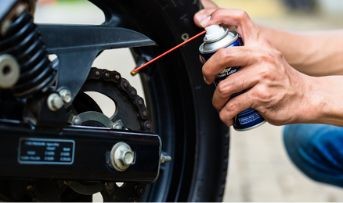
Here are some tips for maintaining your bike’s drive chain to ensure its longevity
A bike drive chain consists of interconnected oval loops made of metal, forming a roller chain. The teeth of a sprocket gear mesh with the holes in the links of the chain. The mechanical force from the engine puts the bike chain in motion, which causes the bike's wheels to rotate. Hence, a bike's drive chain is an important part and must be handled properly.
A drive chain is usually the dirtiest part of our bike. It is oiled and greased, catching loads of dust and mud from the roads. Here are some tips for maintaining your bike's drive chain to ensure longevity.
1. Periodic cleaning:
Regular cleaning keeps it free from dirt build-up, rust, and breakage. You should regularly check your drive chain by lifting the rear wheel of your bike off the ground and manually rotating the drive chain. You should check every chain link and use a firm brush to clean them.
If you hear squeaking sounds from the chain while riding your bike, it is time for relubrication. Also, you should check for tight links that are not bending easily. Clean them properly and lubricate them to ensure their free movement. It will also prevent rust build-up.
2. Lubricant quality:
Always use a good quality lubricant to ensure its longevity. It should be specifically made for a bike's drive chain and should not be just any lubricant.
Dirt and mud damage the drive chain. The lubricant should be such that it should minimise the accumulation of dust and grime on the drive chain. Also, it should be long-lasting as the drive chain will wear down and get damaged if the lubricant is less or missing.
3. Do not over-lubricate:
Over-lubrication is harmful to the drive chain. It will attract more dust, mud, and concrete from the roads and damage the drive chain. To ensure smooth operation, you should always wipe off excess lubricants with a rag.
4. Thorough cleaning of the drive chain:
In case you ride your bike through muddy roads frequently or use it on rough terrains such as a mountain, you should remove the chain completely when it becomes excessively dirty. You can remove it yourself or seek the help of a mechanic.
Use a good quality chain solvent available in the market and soak your chain in it for the prescribed time. Then scrub hard to remove the dirty grime from the chain links. The solvent will do its job, and your chain will become clean and grime-free. Relubricate your drive chain once completely dry, and put it back in the bike.
5. Stretched chains:
Sometimes your bike's drive chain seems to stretch and become loose. This is because of normal wear and tear of the chain with usage. A loose drive chain cannot provide a good grip for the movement of the wheels and may even slip from its cog.
Check for a loose drive chain regularly, and get it fixed as soon as you find one. Ignoring it may cause further damage to the drive chain, and you will have to replace it.
The drive chain of your bike is a very important part of its smooth running. You must take good care of the chain to keep it in its best shape. Clean it regularly and keep it sufficiently lubricated to ensure its longevity.
Buying a good bike insurance policy for your bike is another important thing that you need to do to ensure a glitch-free ride. Buy bike insurance online after comparing it with the policies of several companies. You can do this from the comfort of your home or office without physically visiting any insurance company. Go for the best bike insurance policy as per your specific needs and enjoy complete protection, security, and peace of mind.
Click HERE to buy bike insurance online.
Disclaimer: The information provided above is for illustrative purposes only. To get more details, please refer to policy wordings and prospectus before purchasing a policy.
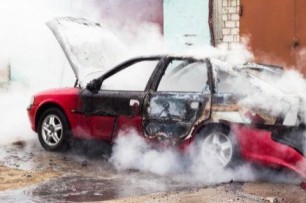
Tips for finding a short circuit in your car's system
An automobile comprises interconnected mechanical elements and complicated electrical wiring technologies. While we may enjoy contemporary comforts such as stereos, interior lighting, and even hologram speedometer readings as long as the electrical systems function correctly, all systems and components come to a standstill on account of short circuits.
A short circuit is a wiring fault because of a loose or defective wire that shunts electricity between courses before it hits its target. Although the signs of a short circuit are similar to those of an open circuit, the diagnosis is somewhat different. A short circuit may happen in various ways, and it's not always straightforward to locate and fix.
However, to understand how to discover a short circuit, we must first grasp how a perfectly working circuit operates. So here are a few tips for locating a short circuit in your car.
1. Make a map of your vehicle's circuit:
Remove the wire harness from your vehicle and turn to your Early Warning Device (EWD) to start diagnosing the circuit. Identify the various cables and circuits you're inspecting so you know where to go next. Wire colours should match the colours specified in the EWD. However, this may differ based on where you obtained your EWD.
2. Examine any exposed wiring:
One may also save time and effort by inspecting any exposed wires first. You may find a damaged or chafed wire that you can immediately begin mending. However, since most automobiles' wiring is tightly wrapped, you'll almost certainly need to try a few boards to figure out where the issue is.
3. Inspect all wires for faults:
If you feel a specific wire causes the problem, you may detach its connection at either the sensing or loading ends. Check your test indicator to see if it fades out or your multimeter to check if it stops buzzing. Next, you may remove your car's panelling and inspect the wires to see if you can pinpoint the problem.
4. Testing the 5V circuit:
In case the short is a 5-volt circuit, the Engine Control Module utilises it to regulate the gearbox and engine. You may unplug the battery first, then the ECM. It'll also enable you to identify electrical oscillations and approximately pinpoint the location of the short circuit.
5. One-by-one assess all the fuses:
Check the fuses and look for any easy, quick short circuits. Take a fuse at random and attach your testing indicator to its socket terminals. If a current is detected, the test LED will light up. If the test light does not ignite, it may suggest that electricity is not flowing to that fuse. This indicates that the damaged wire is along that route.
Knowing how to detect a short circuit may save you a lot of time and money while ensuring that your car is safe and perfectly operational. While it might be time-consuming, utilising the approach mentioned above should provide you with the knowledge you need to detect and fix any short circuit in your vehicle.
However, if you still face difficulty identifying the origin of the short circuit, visit the nearest garage. It is ideal to have your vehicle backed by insurance for even minor expenses like these. Search for the best car insurance in India and get yours right away to cover your vehicle against damages caused due to unexpected short circuits.
Find the best car insurance India for your vehicle HERE .
Disclaimer: The information provided above is for illustrative purposes only. To get more details, please refer to policy wordings and prospectus before purchasing a policy.
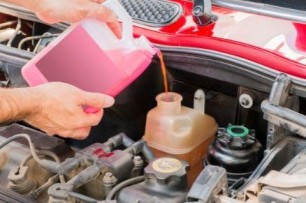
Top car care tips during the summer season
Be it the summer season, winters, or heavy monsoon, you need to take care of a few things to ensure your car's proper functioning and longevity. While external servicing and maintenance of your car are crucial, some particular factors ensure that your vehicle is up and running.
The summer season brings in good weather. But the drastic temperature rise can harm your car. In this space, we will discuss tips for caring for your vehicle during the summer season to keep it in good condition.
1. Cooling your engine:
Engines getting heated due to high temperatures are one of the significant causes of car breakdowns in summers. You can cool off the engine by using cooling systems in your car as recommended by the manufacturer.
2. Coolant refill:
To keep your cooling system in excellent working condition, make sure to refill the coolant according to the overflow status. According to most manufacturers, the cooling liquid mixture usually contains a fifty-fifty water to coolant ratio.
3. Inspect your car:
Some parts of your car are susceptible to heat damage and may deteriorate in high temperatures. Examine your vehicle, and replace any wear and tear or other damages as soon as possible. Also, keep an eye on the coolant leakages due to fuel expansion in summers.
4. Tyres:
Take a close look at your tyres. If they appear to be more inflated than required, get them checked. It's necessary to regularly monitor the air pressure levels in your tyres during the summers.
Failing to do so might risk a tyre blowout which can be a considerable safety risk, especially if you're on the road, examine your car tyres for signs of wear and tear and replace them if you find any damages.
5. Corrosion:
Once your vehicle reaches a specific limit, it is recommended to check your ignition system. The electrodes might corrode or wear out, so replacing the spark plugs is the solution to combat any ignition issues.
6. Air conditioning:
Examine the air conditioning of your car, especially in the summer season. Any defects leading to the disruption of the air conditioner can cause massive discomfort during your travels in such rising temperatures. Also, ensure that you inspect the compressor clutch while checking the air conditioning system.
7. Wipers:
The wipers of your car play an integral role while you're driving. They clear the windshield, making it easier to see while you drive. Replacing the wipers for the summer season with new ones would prepare you for the storms or rainy downpours midseason.
These were a few expert car care tips you will need to take care of your vehicle during the summer season. Apart from these tips, consider protecting your car against unprecedented circumstances. Emergencies like road accidents or damages to different parts of your vehicle can lead to heavy monetary expenses. To avoid paying a massive sum of money in such unforeseeable situations, you can explore various options and purchase car insurance online in India.
Click HERE to know more about how you can get car insurance online in India.
Disclaimer: The information provided above is for illustrative purposes only. To get more details, please refer to policy wordings and prospectus before purchasing a policy.
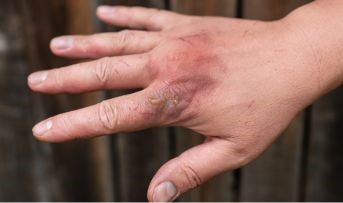
Here are the best tips for administering first aid for burns
First-aid tips and techniques have been a part of our educational curriculum since junior school. We all have learned the first-hand treatments one must do when there is a manageable injury or burn on our or someone else’s body. However, with time and as the level of injuries and diseases evolved, our knowledge about first aid falls short in terms of adequacy in the healing process.
Moreover, burns can happen anytime, primarily if operating around heavy machinery, fire, or in the kitchen. And it requires a lot of time to heal with proper care, ointments and medications, and extra precautions.
But what are some of the best ways to take care of these burns? What items should you include in your first aid kit to help you or someone else? Are there different degrees of burns, and which type of burns can first aid easily?
In this space, we’ll clarify all your doubts regarding first aid for burns. Let’s get started.
1. Minor or major:
A burn usually indicates tissue damage when the skin comes in contact with high flames, boiling water, sunburn/radiation, chemicals with corrosive properties, etc. Before starting the burn treatment, it is advised that you determine the degree of the burn to alter your treatment accordingly and determine whether immediate medical attention is needed.
A major burn occurs when the diameter of the burnt area is more than three inches, resulting in brown, black, and white patches with a dry and leather-like texture of the skin. In case of a minor burn, blisters appear on the burnt area, usually less than three inches in diameter. You will experience pain and inflammation, which might cause redness and soreness on the burnt site.
2. What you should NOT do:
Before we tell you the first aid tips you should follow, you need to be aware of the contamination of the sensitive and burnt part of the skin. Avoid using home remedies like butter, ice, water, etc., and immediately do not take any medications or remedies without consultation.
3. Must know first aid tips:
Remove jewellery items like rings, bangles, etc., from the burnt area. Cooling off the burn is essential. You can gently use cold water on the burnt portion and wet compresses to help with the inflammation and lower the pain. If you see any blisters, do not remove or poke them, as they protect the area from infection. If you see a blister pop, gently clean it with a disinfectant solution and cover it with an antibiotic cream. To ensure that the affected area does not dry out, use skin-friendly and chemical-free moisturisers. Aloe vera is a good option in such cases. Use sterile gauze and tapes to bandage the burn, but ensure that you do not tighten the grip of the bandage. Keeping it loose will prevent excessive pressure and alleviate pain.
You can take any doctor-recommended painkillers if the pain gets unbearable and causes too much discomfort. Avoid heavy tasks involving the burnt area, and avoid using fluffy cotton as tiny threads of cotton might stick to the burn risking the chance of an infection.
We hope you found the blog helpful. You must take care of your body and be extra cautious about your health to lead an extraordinary life. But sometimes, your efforts might fall short in unfortunate circumstances. To alleviate the monetary stress of such times, you must purchase the best personal accident insurance India which will provide you and your family with a reliable layer of financial protection.
Click HERE to learn more about the benefits of buying the best personal accident insurance India.
Disclaimer: The information provided above is for illustrative purposes only. To get more details, please refer to policy wordings and prospectus before purchasing a policy.


